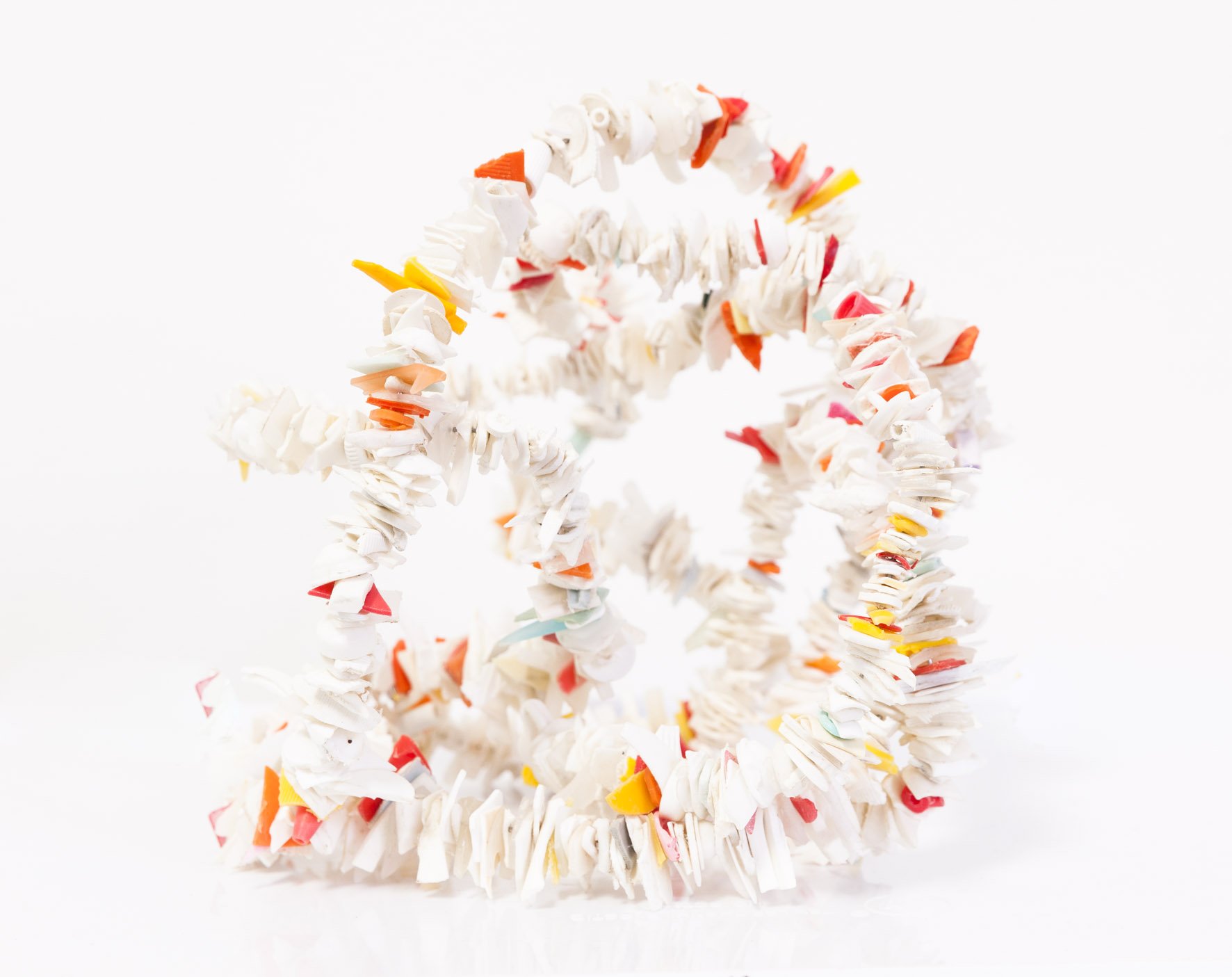“Rox is a gleaner, sorter and fabricator of these now purposeless and discarded plastics,
anchoring them into bizarre garlands and whorls,
each tiny piece a story in itself.
Find in one red-to-pink single-use sea-eroded soy sauce cap
a melancholic time capsule for our time.
Then multiply it by 00s and 000s and 000 000s … pause.
If only…”
Text © Lisa Pang 2023.
“There is a kind of humility to this way of working, a recognition both of the creativity inherent in the everyday, and of the value of the small gesture that can subtly, but sometimes powerfully, change one’s take on things.
…..The works read like rosaries that count out either the pleasures of summer days or the sins of environmental neglect.
De Luca’s practice has consistently addressed the experience of place — the legacy of her family’s migration, the dislocating interstices between languages, the will to make an unfamiliar place one’s own. This series of works continues De Luca’s self-reflexive consideration of her specific, embodied location, but also offers insights on the potential place of the artist in contemporary times, lovingly and discreetly tending to our vulnerable common heritage”.
Jacqueline Milner, 2012
Photo credit: © Enzo Amato






